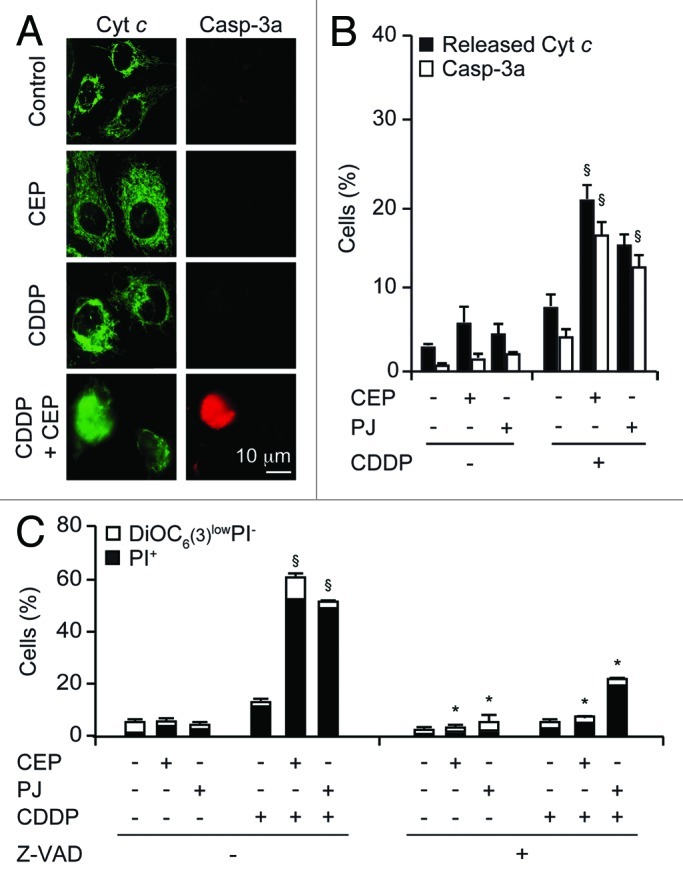
Figure 4. Mechanisms of the synergistic action of cisplatin and PARP inhibitors. (A and B) Effects of cisplatin (CDDP), CEP 8983 (CEP) and PJ34 hydrochloride hydrate (PJ) on the subcellular location of cytochrome c and the activation of caspase-3. Upon treatment with CDDP (20 µM), CEP (10 µM) and/or PJ (30 µM) for 24 h, cells were fixed, permeabilized and stained by immunofluorescence to visualize cytochrome c (green fluorescence) and activated caspase 3a (C3a, red fluorescence). Representative microphotographs are shown in (A), and quantitative results (means ± SD of triplicate determinations) are reported in (B). (C) Effect of caspase inhibition on the cytotoxic effects of CDDP and PARP inhibitors. The experiment was performed by combining CDDP (20 µM), CEP (10 µM), PJ (30 µM) and/or Z-VAD-fmk (Z-VAD, 50 µM), as indicated, for 48 h, followed by staining with PI and DiOC6(3) and cytofluorometric determination of the percentage of dead (PI+) and dying [DiOC6(3)low PI−] cells. *p < 0.05 (Student’s t-test), compared with Z-VAD untreated cells. §p < 0.05 (Student’s t-test), compared with the sum of the cytotoxic effects caused by each agent alone.
